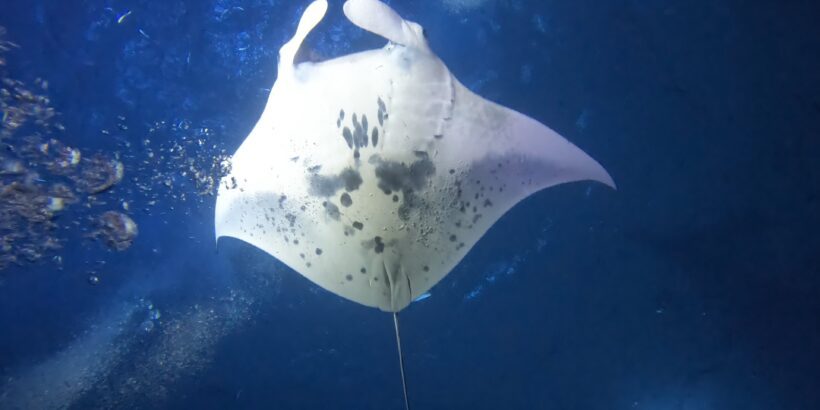Scuba diving with manta rays on the Big Island is without a doubt a bucket list experience.
It’s hard to describe the thrill of watching these gentle giants swoop in above your head and it’s easily one of the top dives I’ve ever done.
If you’re thinking about scuba diving with manta rays on the Big Island, I’ll give you a full breakdown of the experience and let you know exactly what to expect!
Why we chose scuba diving at Manta Heaven
Initially, I wanted to scuba dive at Manta Village because it was so close to our hotel at the Outrigger but I struggled to find any dive outings, so we chose to scuba dive at Manta Heaven/Garden Eel Cove and booked with Manta Rays Dives of Hawaii.
Based on all of the boats we saw, there are a number of diving companies out there but we had a really great experience with Manta Rays Dives of Hawaii, so I would gladly recommend them.
They checked off all the boxes of a good dive shop which included: good pre-arrival communication, experienced and personable crew, equipped boat, and no equipment or safety concerns.
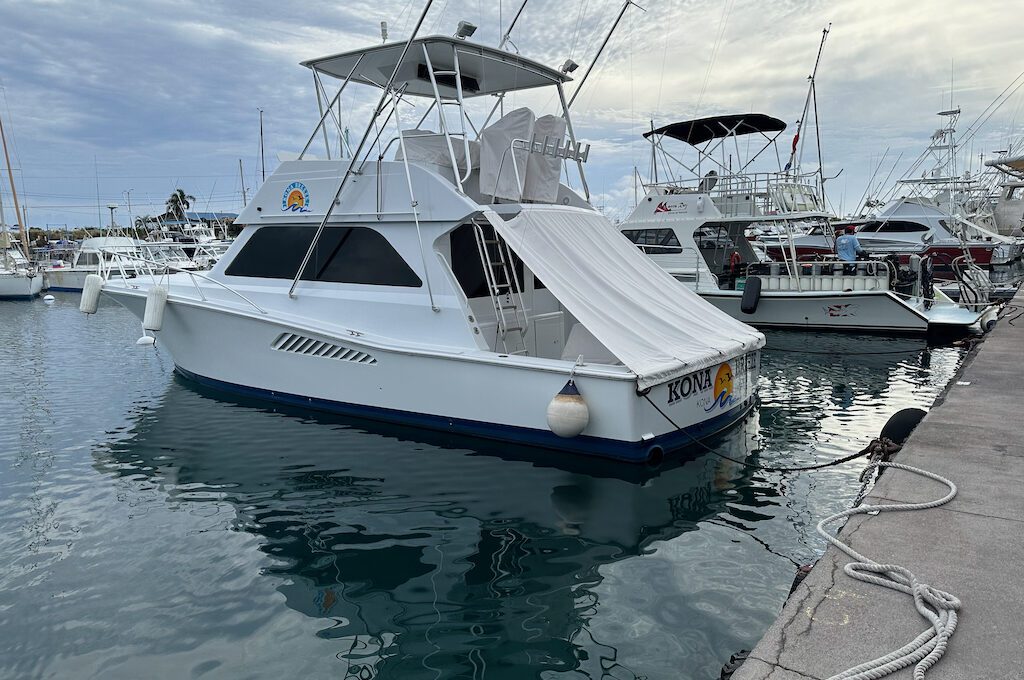
Arriving for the scuba dive
If you go with Manta Rays Dives of Hawaii, you’ll want to arrive at 74-380 Kealakehe Pkwy, Kailua-Kona, HI 96740 right on time as they make it clear that arriving too late means the boat going out without you!
Your exact meeting time may vary depending on the sunset so always double check your email for the correct time.
The email tells you to check in at the boat but in reality you check in under the pavilion right by the boats. If you need to go to the bathroom, there is a public bathroom facility just across the parking lot from where you check-in.
Depending on the size of the groups, there may be one or two boats going out that evening. If you’re snorkeling, you could be on a boat with only snorkelers or on a boat with the divers.
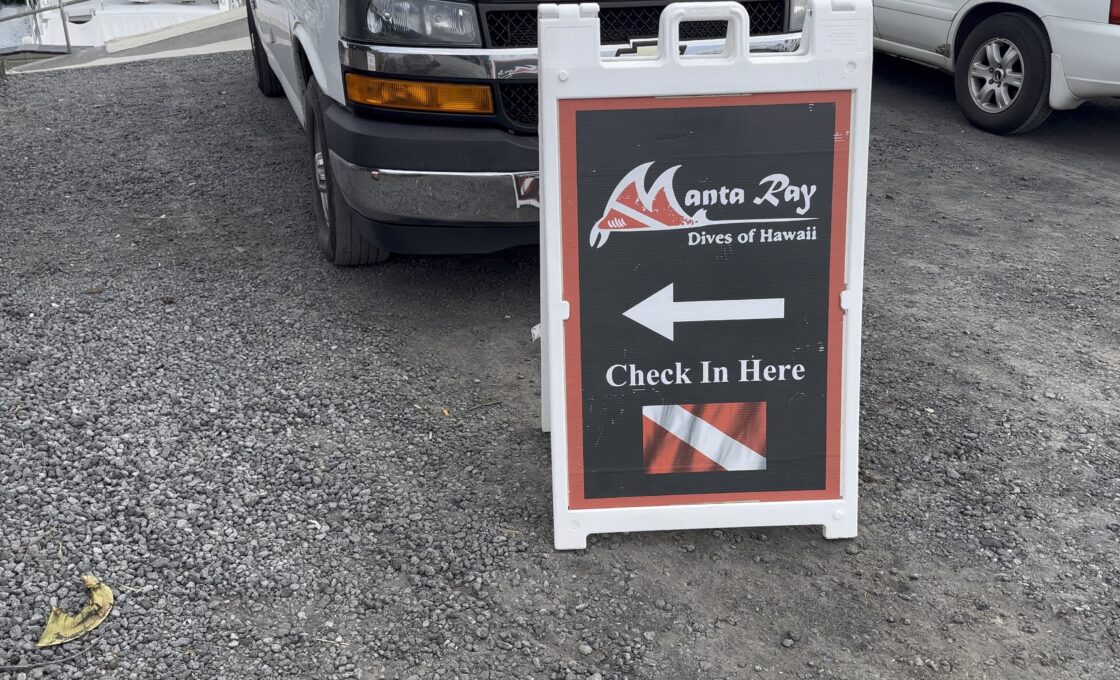
The boat ride out
Once you check in, you will head to the boat where you will find your wetsuit and scuba gear — you should already have a seat assigned for you making things very easy.
This means you should arrive wearing your swimsuit underneath your street clothes.
They have plastic bins under your seats with lids so it’s really easy to keep your bags or other items dry which is really nice. Still, bring a towel because it could get cold on the way back in. Also, a waterproof jacket could come in handy since my shirt got pretty drenched on the way in.
It took us about 25 minutes to get to our diving spot where we saw several other boats when we arrived.
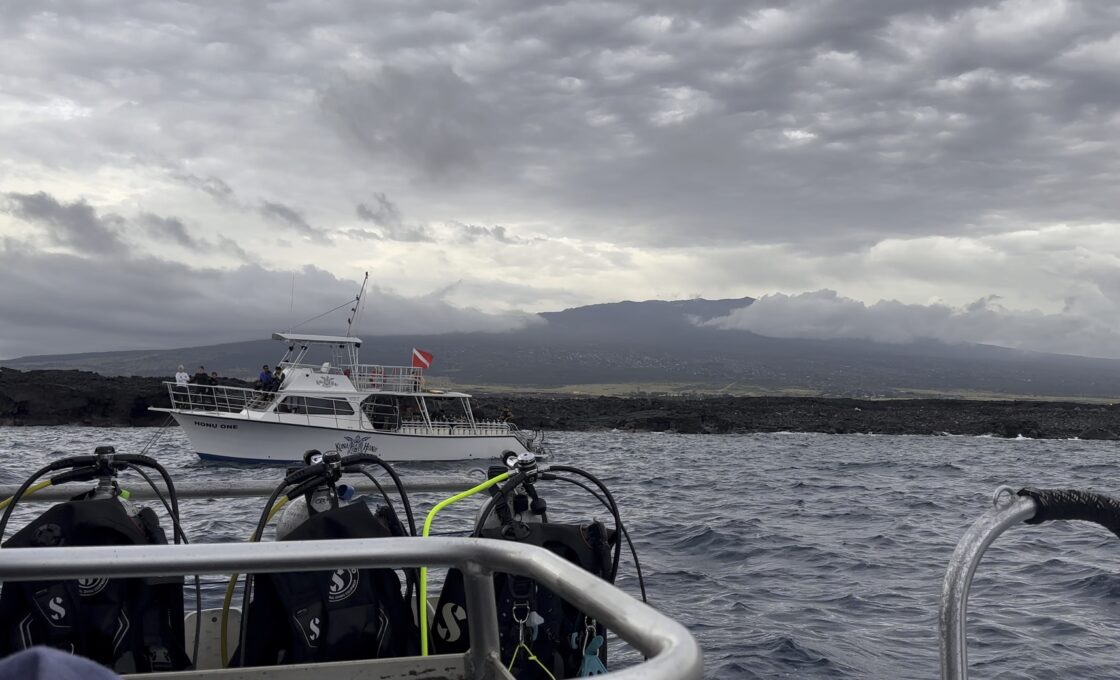
Once we were there, the instructors gave us a short lecture on the manta rays, which was pretty interesting and informative. They also did a good job of fielding all of our questions.
The only issue was that it was pretty choppy out there. People like me, who are a little iffy with sea sickness, may find themselves counting down the minutes until it’s time to dive in. In total, it took about 45 minutes for us to get into the water after we arrived.
They did have ginger chews on board which I took advantage of and I ended up being just fine but it’s always a little dicey for me when it comes to bobbing for that long on choppy waters. For sure, I would have preferred to have the mini-lecture on land and then just dive right in, but I understand they need time to set things up.
After the informational lecture, they gathered the divers at the bow where we talked specifically about what the dive was going to be like.
At about that time a whale appeared over the horizon and we got a little bonus wildlife spotting at sunset! Incredible and a bit lucky I guess since we were later in the season.
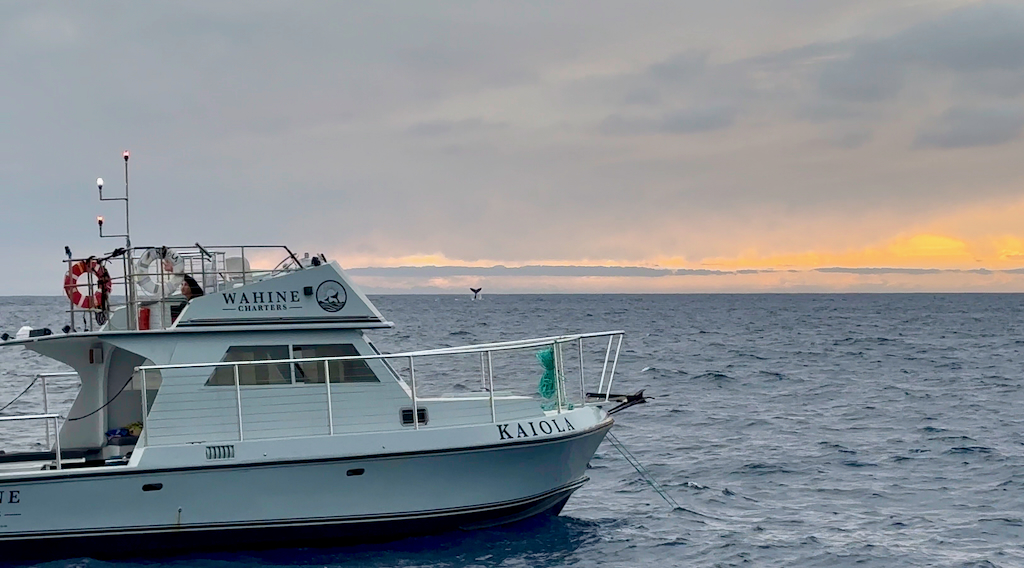
Overall, the dive here is a really simple process.
If you’ve never done a night dive then the only thing really different about the experience is that you have a light torch attached to your BCD. It’s easy to operate (it’s just an underwater flashlight) and I just left mine on the entire time, which I believe is what you are supposed to do.
Related: Visiting Mauna Kea: Sunrises, Sunsets, & Stargazing
The dive
Once you enter water, you’ll head straight down and then likely be directed to the campfire which is a large circular rock structure at the bottom of the ocean floor. (It’s possible they could take you to another location depending on conditions and dive depth can range from 35 to 53 feet.)
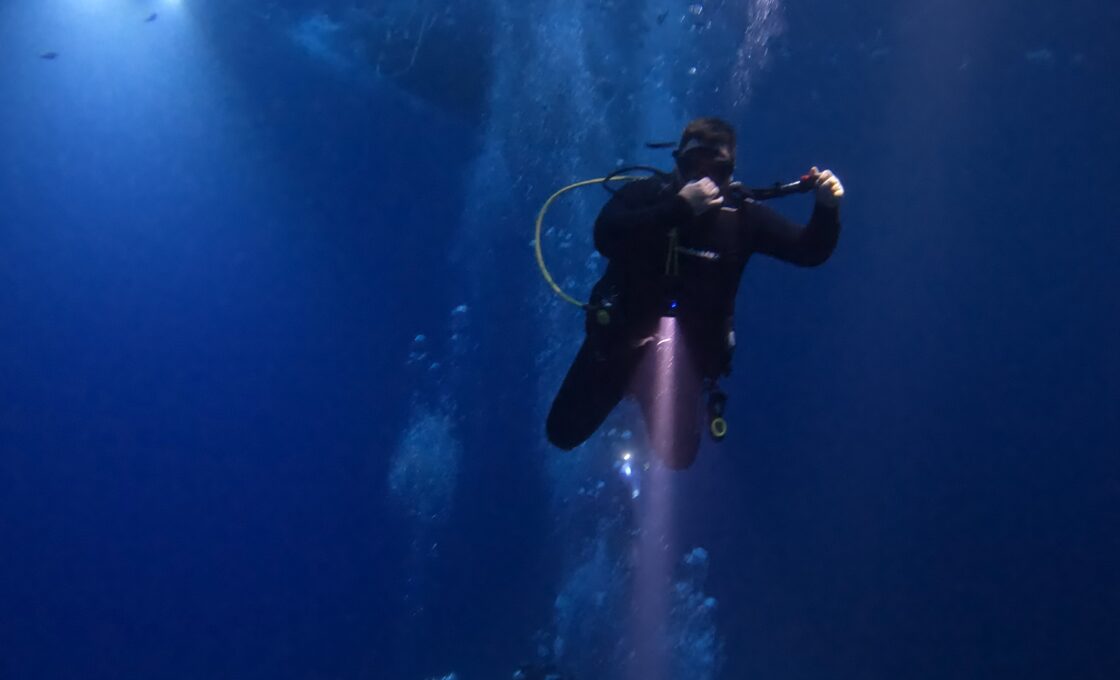
From there, your instructor will show you exactly where you need to be for the entirety of the dive. It’s your preference as to how you want to get comfortable down there. For example, you can hold the rocks, hug the rocks, lie on the rocks, sit on your knees, etc.
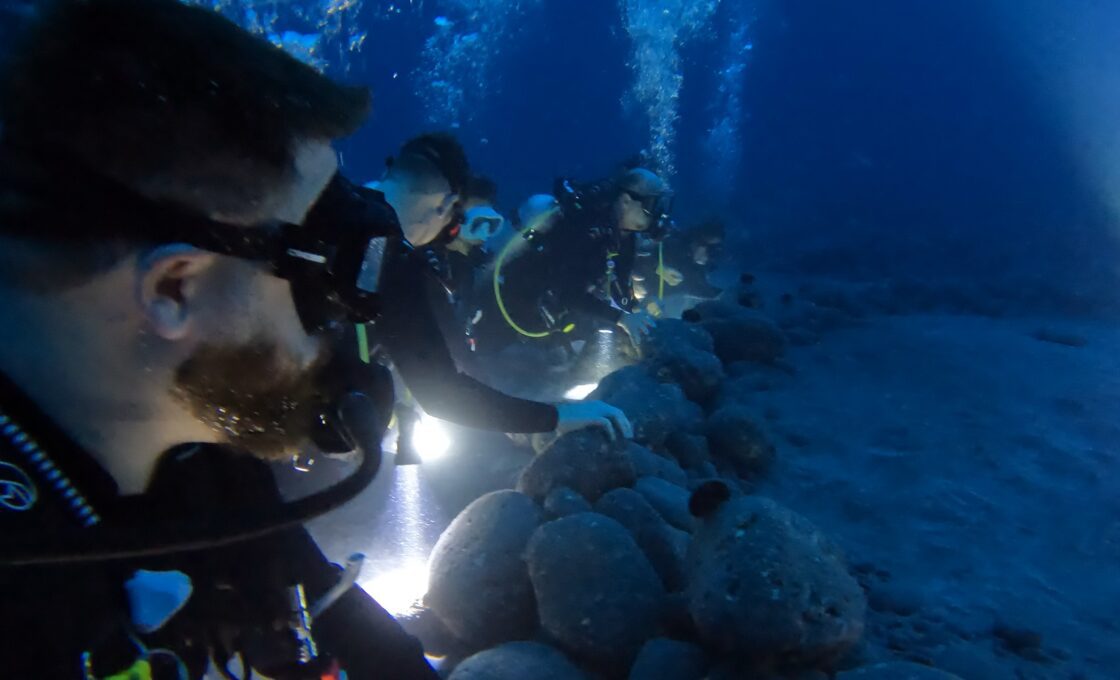
There will likely be several other diving groups around the campfire and lots of light beams shining up towards the surface in order to attract the plankton and the mantas. That visual, in and of itself, is pretty cool to see as it almost has this underwater night club feel to it. Only thing missing is house music.
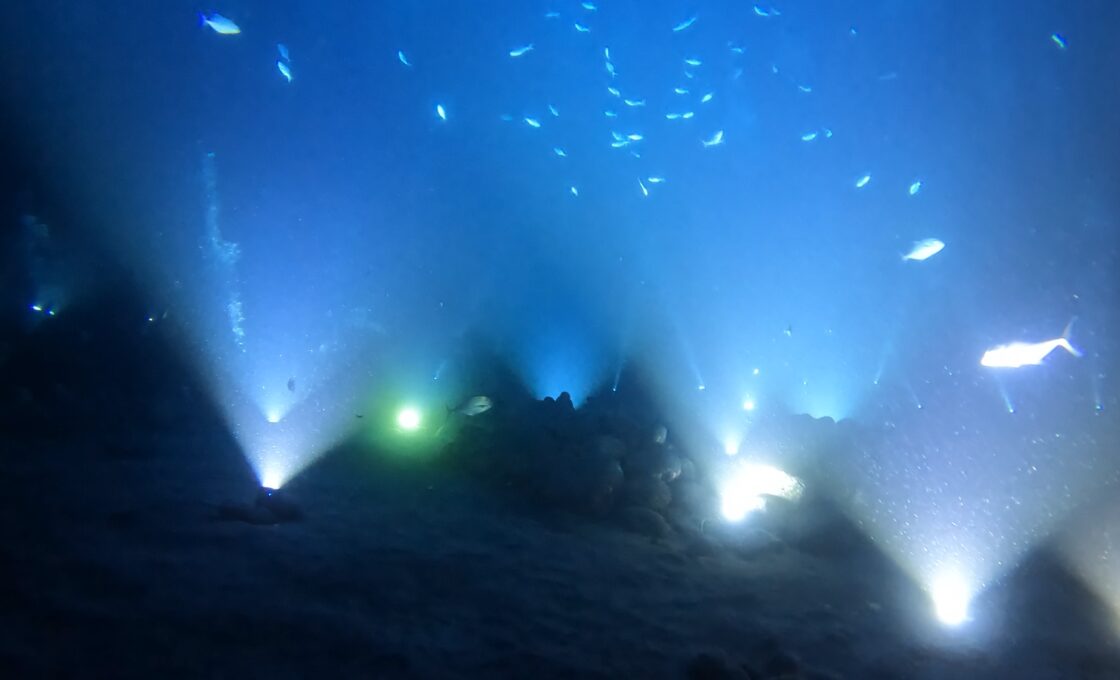
While there were lots of people down there, it didn’t feel overcrowded and we didn’t have any issues staying together as a group.
It only took about three minutes for the first manta ray sighting for us which was pretty amazing.
It swooped in from the right and then made several majestic turns in front of us in typical manta ray fashion. I was very satisfied with that sighting alone but it would get much better.
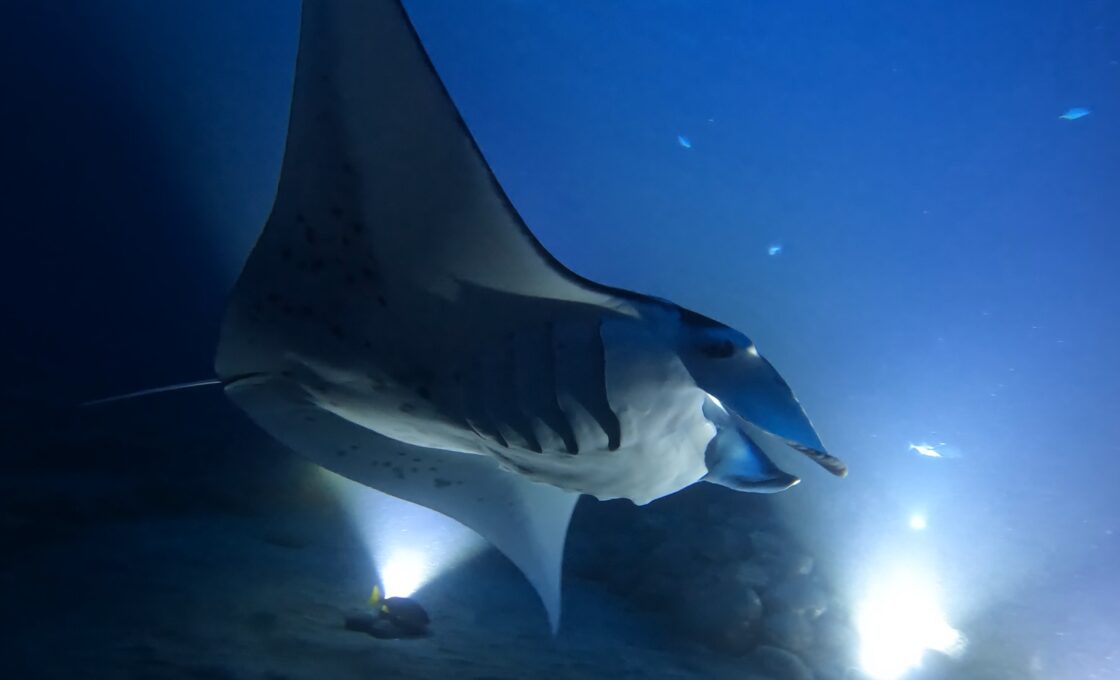
About a minute later another one came in and we had two manta rays to admire!
Sometimes they would hang around a little higher above us but then they would make their move down really close to us. At times, they would fly in from our blind spot which is always a thrill.
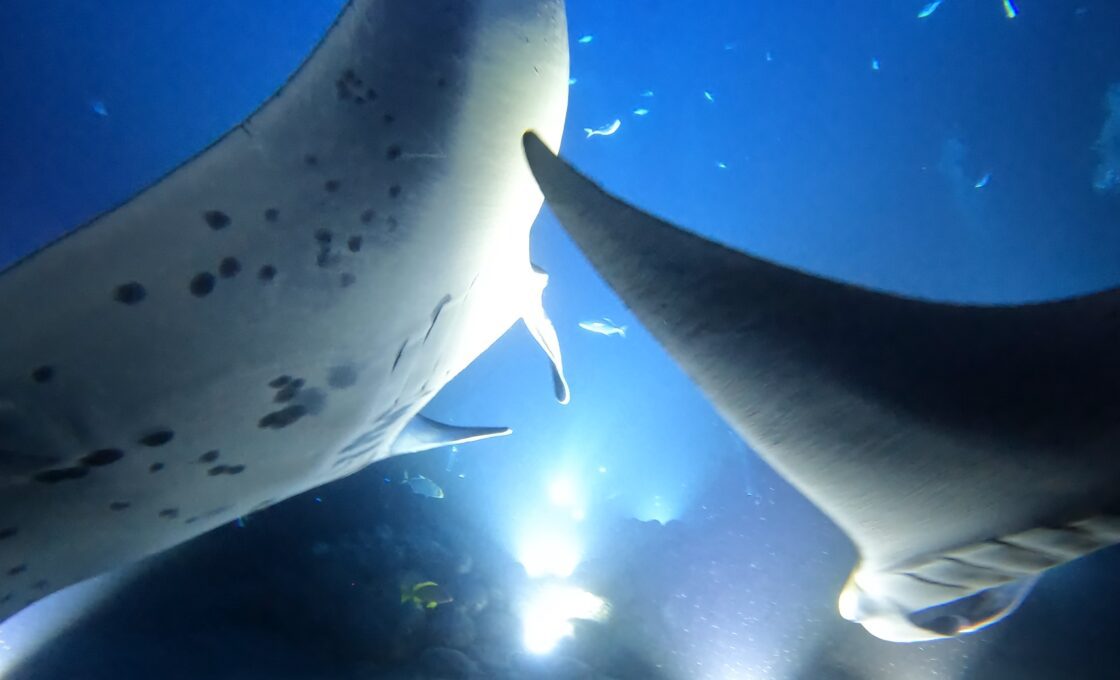
We always tried to limit the bubbles whenever they got really close so that we did not scare them away. And sometimes you even have to duck so that you don’t contact them and potentially injure their fragile exterior.
It seemed like every minute or two there would be a new addition to the crew of mantas. Before long, there were six or seven different mantas coming through from seemingly every direction! It was wild.
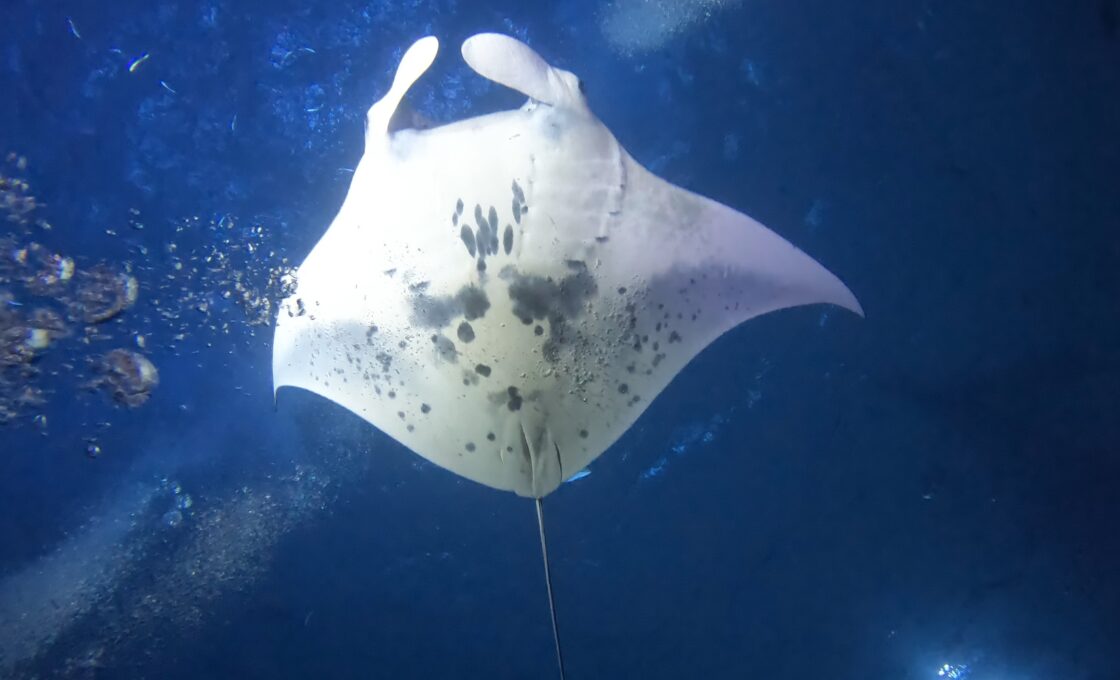
We had done a scuba dive and encountered manta rays before in the Maldives and it was breathtaking.
Because of that dive, I almost passed on this experience so that I could try something different while on the Big Island. But I’m very happy that I decided to do this dive because it was such a different experience from the Maldives.
There’s just something about being so close to giant creatures that makes you feel so alive. But unlike encountering something like a great white shark, you know that these are gentle giants which just makes it a very peaceful and mesmerizing time under the water.
So if you were thinking about passing on diving with manta rays because you have encountered them before, I’d encourage you to still try out this dive because it is so different from anything else!
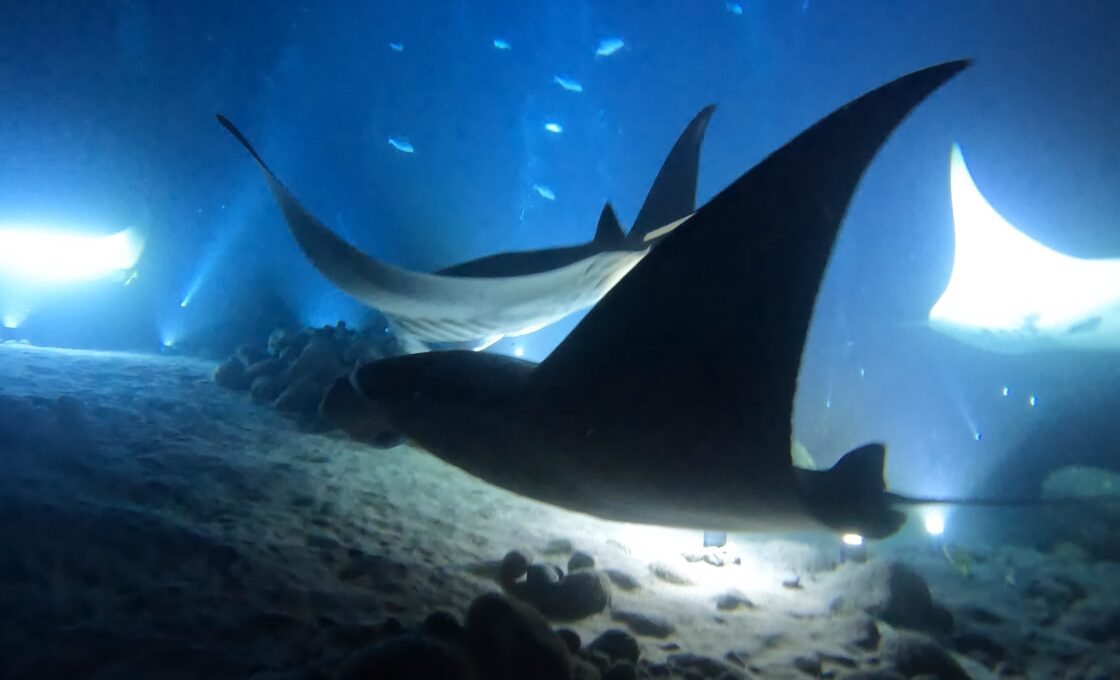
If for some reason the mantas are not approaching, you can hold your flashlight straight up above your head to attract them but make sure you don’t flash them in the eyes. (Also make sure you are not flashing other divers with your lights.)
We never felt the need to hold our lights above our heads because there were so many manta rays constantly coming in so close.
In total, I believe there were about 10 different manta rays that ended up showing up which is an above average showing.
On average it sounds like you may see 2 to 3 manta rays although it is possible for them to never show up at all. If you’re not fortunate to see any then I believe you can go out on another dive for free.
Also, if no manta rays show up then it’s possible the instructor could take you on an actual dive after waiting around for them for about 15 to 20 minutes.
One thing I really liked about the experience is that you can just focus on the beauty of the mantas. Since you don’t have to swim anywhere, all you need to worry about is admiring these creatures (and monitoring your air supply).
While I was keeping an eye on my air levels, our dive instructor was constantly checking our air for us, so we never felt neglected (which would be a big deal for people doing a night dive for the first time).
In total, we were down there for 45 minutes which really went by quickly.
I will say that because you are not actively swimming you may start to get a little chilly. The 3mm wet suit wasn’t quite as thick as I probably needed so I was fighting off shivering the last 10 minutes or so.
It might help if you can at least bring booties and a hood to help you stay a little warmer.
On the other hand, Brad was just fine with the temps so it really just comes down to your body. I probably was extra prone to temperature issues since I was coming off covid and my body was still doing weird things.
Heading back
After we finished the dive, we made our way back in the dark with beautiful nighttime views of the coast and the city lights of the mountainsides.
I thought that I would be freezing with my shirt off on the boat with all the sea mist and wind hitting me but it actually just felt great.
I’d never done a night dive before so heading back to the coast after sunset was a very different feeling, which I think is what this dive is all about.
It’s just so different from any other dive I’ve done and in the most mesmerizing kind of way!
Final word
Overall, this was the number one thing we did while on the Big Island. I think this is a great way to introduce yourself to night diving and if the mantas come out, you’ll be in awe for as long as they hang around for. I couldn’t recommend this experience enough!
Daniel Gillaspia is the Founder of UponArriving.com and the credit card app, WalletFlo. He is a former attorney turned travel expert covering destinations along with TSA, airline, and hotel policies. Since 2014, his content has been featured in publications such as National Geographic, Smithsonian Magazine, and CNBC. Read my bio.

